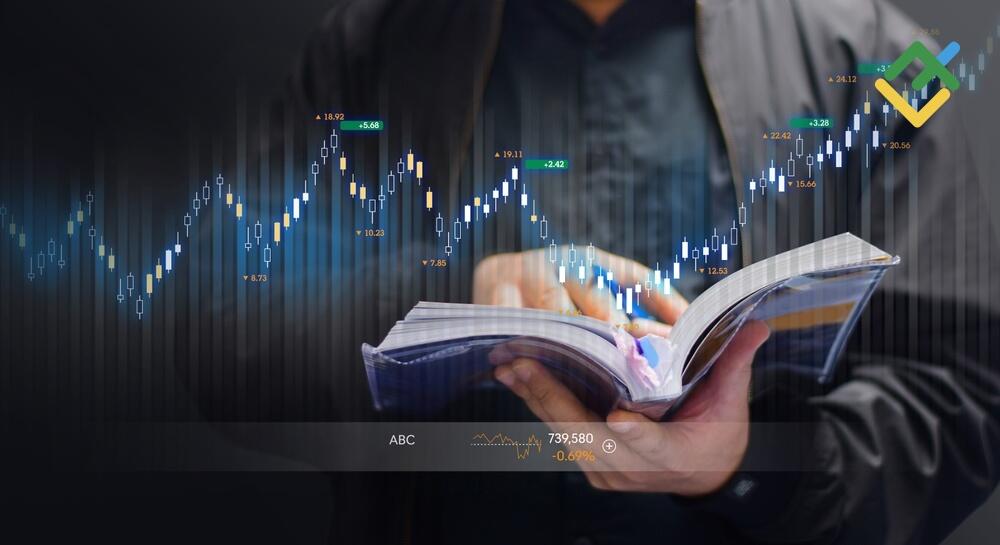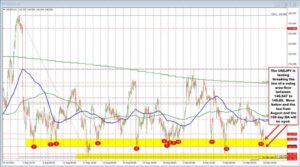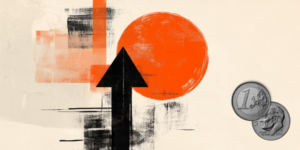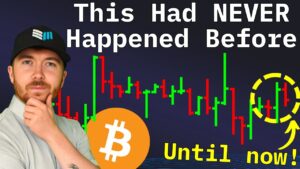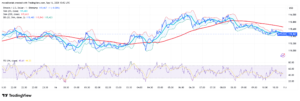Best Technical Analysis Books For Beginners in Trading
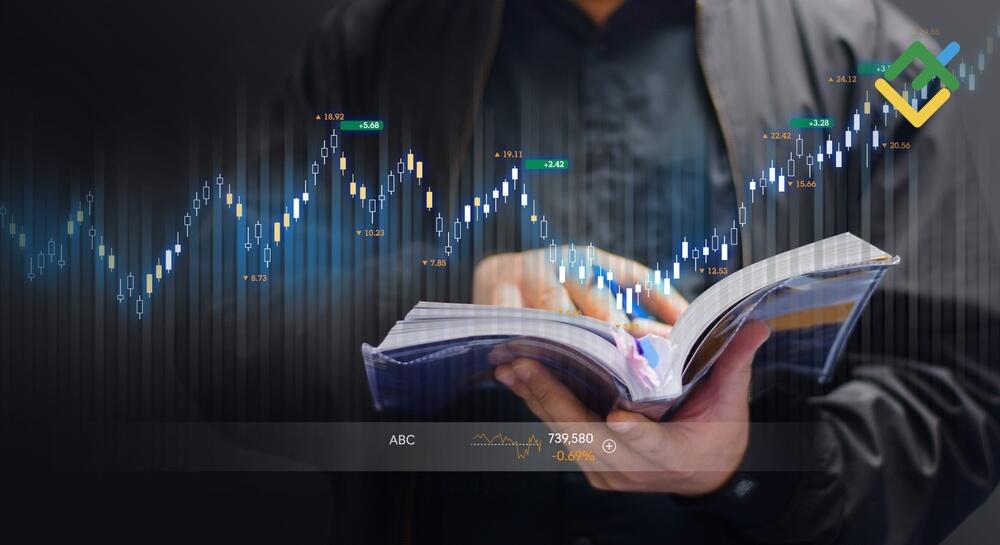
This article presents what the author modestly considers to be the best books on technical analysis. All of these books reveal the art of trading from different angles. The reading list is compiled in such a way that every trader can find a suitable guide based on their skills, experience, and knowledge.
We will begin our review with books for beginners, then move on to more comprehensive reference books on chart patterns, concluding our review with specialized topics, which include Japanese candlesticks, market structures, unusual patterns, trading systems, automated trading, market psychology, and so on.
The article covers the following subjects:
Major Takeaways
-
Any skill can be learned either with the help of a mentor or relevant books. It is better when both approaches are taken together. The best books on technical analysis help to gain deep insights and expand your existing knowledge of financial markets.
-
Beginners may find it beneficial to embark on their journey into the world of technical analysis with books written in an accessible and straightforward style. For example, Technical Analysis for Dummies by Barbara Rockefeller and Trading for a Living by Dr. Alexander Elder. These books offer clear insights into the fundamental mechanics of the market.
-
More experienced traders who grasp the concepts of technical analysis can delve into more comprehensive guidebooks to reinforce their existing knowledge and expand their trading system with the essential tools and indicators. The most reliable and popular reference book is Technical Analysis of the Financial Markets: A Comprehensive Guide to Trading Methods and Applications by John Murphy.
-
If you want to master specific trading techniques, focus on a particular aspect of trading, understand trading psychology, or study investment trends, you can refer to the Specialized Technical Analysis Topics section in this review. It features books such as Japanese Candlestick Charting Techniques by Steve Nison, Bollinger on Bollinger Bands by John Bollinger, and others.
-
For those who want to dive into advanced technical analysis, engage in algorithmic trading, and use this knowledge to create a trading system, Trading Systems and Methods by Kaufman Perry will be a top choice. This 1,000+ page book thoroughly examines trading systems with a thirty-year history and discusses nine principles that will help professional traders develop their trading strategies.
-
The Statistical and Pattern Analysis section deserves special attention. It presents books on chart patterns, recurring formations, and statistics on these models. These are go-to books for chartists and wave analysis admirers.
How to Choose the Right Technical Analysis Books
Trading can be mastered through books, although it is a time-consuming process. In this sense, it shares similarities with the game of chess: learn the rules, strategies, tactics, and gambits, then proceed to practice. There are numerous books on trading in financial markets, and not all of them are worth your attention.
Below are several criteria that will help you choose the most useful books on technical analysis:
-
The book should be written by a trader.
-
This trader should be distinguished in the history of trading and investing.
-
The book should contain detailed and informative charts.
-
There should be a clearly described, specific idea with proven results, or several such ideas, as in encyclopedias.
Essential Technical Analysis Books for Beginners
If you are just starting out, you can choose the most popular and easy-to-understand books that will reveal the essence of technical analysis and offer basic strategies that you can use. As a rule, such books represent compilations or encyclopedias that describe various trading methods. After all, every novice trader should find their trading instrument, market, and style.
Technical Analysis, Study Guide by Jack Schwager
Jack Schwager’s book is a fundamental guide to analyzing financial markets. The author explains in detail the key methods of technical analysis: chart patterns, technical indicators, oscillators, volume, wave theory, cycles, and building trading systems.
Schwager brings a wonderful blend of theory and practice to his work, using real-life examples to help us understand market psychology. A big part of the material is dedicated to risk management and an approach to analysis based on probabilities and statistics. This book is perfect for traders of all levels, from those just starting out to the pros. It is widely regarded as a leading reference on related financial topics and is considered a classic of financial literature.
Technical Analysis for Dummies by Barbara Rockefeller
This book is a clear and accessible guide to the basics of technical analysis for novice traders and investors. The book covers key topics: how to read charts, identify trends, determine support and resistance levels, use popular technical indicators such as MACD, the relative strength index (RSI), and moving averages, as well as candlestick patterns and strategies for entering and exiting trades.
Barbara Rockefeller explains every topic in simple words without overloading the reader with formulas, focusing on practical application and developing trading skills that will help you understand future price movements.
Notably, the latest edition is supplemented with modern examples from the live market. This guide is the perfect start for those who want to understand price behavior and make more informed trading decisions in the financial markets.
Trading for a Living by Alexander Elder
This book is a timeless classic that encompasses technical analysis of stocks, trading psychology, and capital management in a single system. The author, a practicing trader and psychiatrist, explains why emotions get in the way of making money, how to build discipline, and how to manage risk.
The book examines the main chart patterns, indicators, especially MACD, key levels, and trading volume. Elder explains how to keep a trading journal, use trading signals wisely, and avoid being caught off guard by the market. This book is suitable for both beginners and experienced traders. It is definitely one of the best comprehensive guides to trading.
Comprehensive Technical Analysis References
Comprehensive technical analysis reference guides are usually the go-to books for professional traders. They are useful in situations where you need to quickly open the relevant section, find the necessary indicator, read its description and how it works, and then add this technical analysis tool to the chart to make a decision.
Technical Analysis Explained by Martin Pring
Technical Analysis Explained by Martin Pring is a fundamental guide to technical analysis, suitable for both beginners and seasoned traders. The book covers trend analysis, support and resistance levels, chart patterns, moving averages, indicators, including the Know Sure Thing (KST) oscillator developed by Pring himself, overbought and oversold conditions, volume, market cycles, and psychology. Pring explains in detail how to analyze trends and interpret market movement.
The fifth edition has over 800 pages with examples and charts. The book is widely used in preparing for professional analyst certifications, such as CMT, and is considered one of the most comprehensive and respected works in the field of technical analysis.
Technical Analysis of the Financial Markets: A Comprehensive Guide to Trading Methods and Applications by John Murphy
John Murphy’s book is a classic and comprehensive guide to technical analysis, recognized as the gold standard in trading. The book covers key aspects: charts, trends, levels, patterns, indicators (MACD, the RSI, moving averages), volume, open interest, Japanese candlestick patterns, and intermarket analysis. The author explains how to understand market behavior, determine market structure, identify signals, and make informed decisions.
The publication is suitable for both beginners and skilled traders. Particular attention is paid to psychology, risk management, and trading strategies. This is a fundamental work on which the study of technical analysis is based worldwide. For many traders, this book stands in first place. After reading it, you can move on to a more detailed study of technical tools and methods.
Technical Analysis from A to Z by Steven Achelis
Steven Achilles’ book is a reference guide covering more than 100 indicators, oscillators, and technical analysis methods. The book is structured like an encyclopedia, with each tool described briefly, clearly, and accompanied by examples. Achelis explains the principle of operation, interpretation, and application of indicators in trading, including MACD, the RSI, Bollinger Bands, moving averages, Gann tools, and many others.
This book is handy for quickly finding information and is suitable for both new and seasoned traders. While the book is not packed with theory, it gives you powerful tools for practicing. It is a great reference book for anyone who uses technical analysis in trading.
Specialized Technical Analysis Topics
Specialized topics in technical analysis involve studying a specific area of financial market analysis, such as Japanese candlesticks, price action, volume, specific groups of indicators, or price patterns. Books on these topics provide a deeper insight into the essence of trading and a detailed description of the processes occurring in financial markets. These techniques should be studied after gaining some basic knowledge and experience.
Japanese Candlestick Charting Techniques by Steve Nison
This is a classic book that first introduced traders to Japanese candlestick patterns. Nison explains in detail the principles of candlestick charting and its advantages over traditional methods of analysis. The book examines dozens of candlestick formations: Doji, Hammer, Harami, Morning Star, Evening Star, and other candlestick patterns, with examples and interpretations in the context of market trends.
Steve Nison shows how to combine candlestick analysis with a range of other tools. This is a fundamental work that has become a reference book for traders worldwide and essential reading for anyone who uses chart analysis and trades on candlestick charts.
A Complete Guide To Volume Price Analysis by Anna Coulling
Anna Coulling’s book represents a practical guide to the VPA (Volume Price Analysis) method, which combines price and trading volume analysis to forecast market movements. The author explains her perspective on how to identify trends, reversal key areas, and confirmation signals, using examples from live markets and historical cases.
The book pays particular attention to the concepts of levels and how volume reveals the actions of major players, describing techniques inspired by such classics as Charles Dow, Jesse Livermore, and Richard Wyckoff. It reveals a universal approach suitable for traders in any market where trading volume changes can be tracked. It is useful for those who value logic and objectivity in decision-making.
Bollinger on Bollinger Bands by John Bollinger
This book is written by John Bollinger, a trader on Wall Street and the creator of one of the most popular technical indicators. In his book, Bollinger explains the principles of constructing and applying Bollinger Bands to analyze market volatility and price extremes. The book covers methods for adjusting parameters, combinations with other indicators, and rules for entering and exiting the market.
This book focuses on signal confirmation strategies and risk management. It is rich in practical examples with charts. This comprehensive work is essential for understanding market psychology and learning how to use Bollinger Bands as a complete system. It is suitable for both novice and experienced traders.
Advanced Technical Analysis and Trading Systems
Advanced books on technical analysis are essential for traders who have already mastered the basic skills of technical market analysis and are familiar with commonly available trading strategies. Such traders typically have extensive knowledge of the markets and may wish to develop their trading strategy but are unsure where to begin.
Trading Systems and Methods by Perry Kaufman
Perry J. Kaufman’s Trading Systems and Methods is one of the most important books on algorithmic trading and systematic market analysis. The author examines in detail the construction of trading strategies, including trend systems, countertrend approaches, adaptive methods, and the use of indicators and filters.
Kaufman devotes a lot of attention to testing, optimization, and statistical evaluation of trading systems. The book contains numerous formulas, examples, and mathematical calculations, making it particularly useful for researchers, programmers, and experienced traders. This is a sophisticated study for those who want to create and analyze trading algorithms, rather than simply follow templates. It is suitable for advanced learners.
Technical Analysis Using Multiple Timeframes by Brian Shannon
Brian Shannon’s book serves as a practical guide to analyzing different time frames for making more accurate trading decisions. The analyst explains how to combine long-term, medium-term, and short-term charts to determine the direction of the trend, entry, and exit points. This book introduces you to the principles of trading with multiple time frames.
It also covers key levels, moving averages, price patterns, and crowd psychology. The book emphasizes the strategy of trend trading using higher time frames as a filter, known as Multiple Time Frame Analysis (MTFA). Shannon shows how to avoid false signals and build a systematic approach. The manual is suitable for both beginners and experienced traders who want to improve the accuracy of their trading decisions and forecasts by analyzing multiple timeframes.
Evidence-Based Technical Analysis by David Aronson
David Aronson applies a scientific method to technical analysis: he tests more than 6,400 trading rules, evaluates them for statistical significance, and identifies the problem of data mining bias—when historical profits may turn out to be a false illusion. By minimizing subjective review methods, Aronson offers a rigorous methodology for developing algorithmic trading strategies with an objective scientific basis. The book is especially useful for those who create or test automated trading systems, as it describes how to do this correctly and efficiently.
Statistical and Pattern Analysis
Statistical and pattern analysis includes a review of graphic patterns and their further analysis to identify statistics on their appearance in the market, as well as their performance. The books in this section are devoted to the systematization of traders’ knowledge of graphic patterns, presenting recurring formations and guidelines for trading.
Encyclopedia of Chart Patterns by Thomas Bulkowski
Thomas Bulkowski’s Encyclopedia of Chart Patterns is a fundamental work on chart analysis, covering more than 60 price patterns, including Heads and Shoulders, Triangles, Flags, Pennants, and others. Each pattern is described in detail, including what it looks like, how it forms, and under what conditions it works, with examples and reliability statistics based on years of analyzing real data. Based on this, you will learn to determine the market sentiment at a specific point in time.
Bulkowski provides specific rules for entry and exit points, profit targets, and stop-loss management. The book offers numerous illustrations, tables, and practical recommendations. It is suitable for both beginners and experienced traders who seek to apply graphical analysis not by eye, but with a professional approach and precise metrics.
The Art and Science of Technical Analysis by Adam Grimes
Adam Grimes’ book is a thoroughly developed guide that combines chart analysis with a quantitative approach. The author offers a structured view of price action and helps readers recognize market patterns rather than random price noise. The book covers trends, support and resistance levels, chart patterns, candlestick analysis, volatility, and market context. Grimes emphasizes hypothesis testing, risk management, and the development of trading approaches based on objective data.
It is suitable for traders who seek to combine intuition with analysis, aiming to memorize market signals and gain a deeper understanding of the market, its structure, and fundamental principles. It will also help develop analytical skills.
Elliott Wave Principle: Key to Market Behavior by Albert Frost and Robert Prechter
Elliott Wave Principle: Key to Market Behavior is a classic guide to wave analysis based on Ralph Elliott’s theory. The book explains how market cycles form in the form of repeating waves that reflect crowd behavior. The authors reveal the structure of trend and corrective waves, the principles of their identification, and practical application.
The authors devote special attention to the rules of alternation, Fibonacci ratios, and the psychological aspects of market movements. The book describes the history of the wave principle and examines the golden ratio rule. With illustrations and charts, it helps you understand how to use wave analysis to predict prices. It is a must-read for traders who want to get a deeper understanding of market structure and cycles. It is the Bible for speculators studying wave analysis.
Psychology and Philosophy of Trading
Books on trading psychology and philosophy, although not directly related to technical analysis, are inextricably linked to it. One cannot be separated from the other, because both analytical thinking and emotions are involved in making trading decisions. The list of books below will help you develop your trading mindset, which often accounts for up to 50% of your success in the market.
Trading in the Zone by Mark Douglas
Trading in the Zone is a classic book on trading psychology that teaches you to think in terms of probabilities and eliminate emotional barriers that prevent you from making rational decisions. The author explains why most traders suffer losses despite their knowledge of technical analysis and how destructive attitudes such as fear, hope, and greed are formed.
Douglas shows how to develop rules, build confidence, and create a stable mental approach to trading. The book offers a step-by-step transition from emotional to systematic thinking. You will learn how to master technical analysis through discipline. This is a must-read for those who want to not just trade, but do so consistently and without self-crippling mistakes.
Market Wizards Series by Jack Schwager
Jack Schwager has already been mentioned earlier in this article, in the Essential Technical Analysis Books for Beginners section. However, in addition to his fundamental guide to market analysis, the author is also known for his Market Wizards series, including the following works:
-
Market Wizards: Interviews with Top Traders.
-
The New Market Wizards: Conversations with America’s Top Traders.
-
Stock Market Wizards: Interviews with America’s Top Stock Traders.
-
Hedge Fund Market Wizards: How Winning Traders Win.
-
Unknown Market Wizards: The Best Traders You’ve Never Heard of.
These are compilations of interviews with prominent traders Paul Tudor Jones, Ed Seykota, Bruce Kovner, and others. These books help understand the mindset, approach to risk, discipline, path to success, and mistakes that even masters make. The series is designed to assist readers in identifying their unique trading style, recognizing the significance of psychological aspects, managing emotions, and developing a sustainable approach to trading in the stock market.
Trade Your Way to Financial Freedom by Van Tharp
Van Tharp’s book is a practical guide to creating your own profitable trading system. The book explains why there is no universal strategy and how important it is to choose an approach that suits your personal goals and technical analysis mindset. It focuses on trader psychology, capital management, and market signal statistics. Tharp introduces the expected value concept and explains how to build systems with a positive mathematical expectation. He also discusses in detail errors in thinking, obstacles to success, and methods for overcoming them.
This comprehensive guide seamlessly integrates psychology, mathematics, and a systems-based approach, making it an essential read for anyone seeking to enhance their trading strategies.
Conclusion
When you choose to become a trader, you should clearly understand that it is impossible to learn all trading methods, all existing candlestick and chart patterns, partly because it contradicts the market’s chaotic, complex, and volatile nature. Every day, the market is different, ready to turn a new page. However, the more you know and practice, the sooner you will understand what you need in the market.
To be successful in trading, you need to create your unique trading strategy. Books are designed to help you with this. Start by learning the basics, then choose the area that best suits your personality and explore it. Gain knowledge and move towards success.
Best Technical Analysis Books FAQs
The content of this article reflects the author’s opinion and does not necessarily reflect the official position of LiteFinance broker. The material published on this page is provided for informational purposes only and should not be considered as the provision of investment advice for the purposes of Directive 2014/65/EU.
According to copyright law, this article is considered intellectual property, which includes a prohibition on copying and distributing it without consent.
